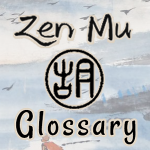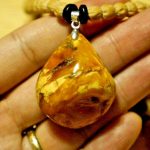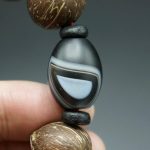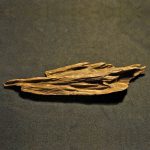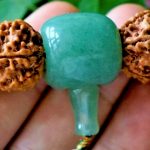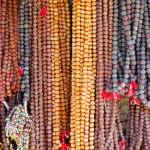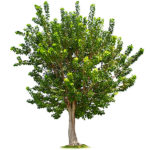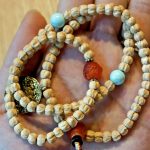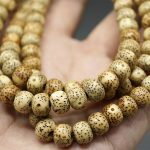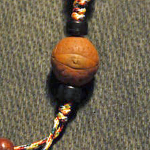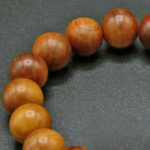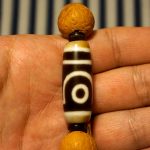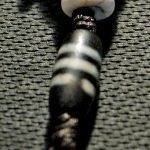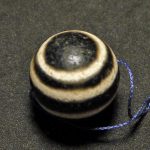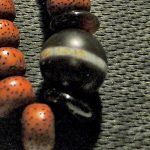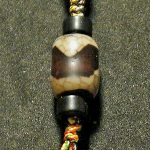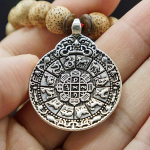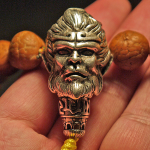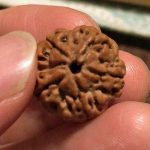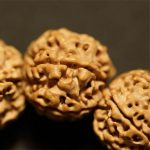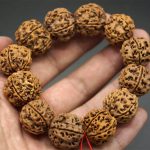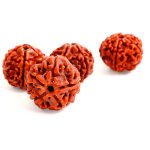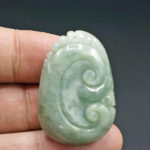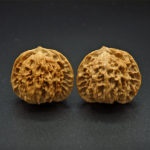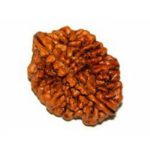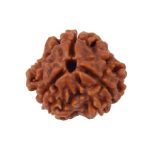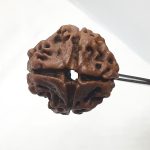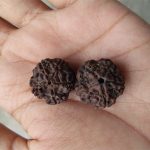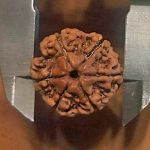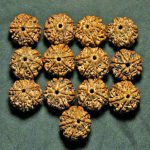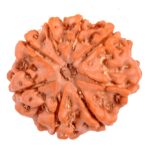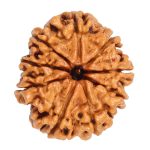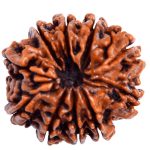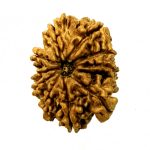~~ A ~~
Aath Mukhi (Sanskrit) see: 8-faced rudraksha.
Amber (definition coming soon).
~~ B ~~
Barah Mukhi see: 12-faced rudraksha.
Bhaisajyaguru Bead is also known as also known as Suleimani Bead. (definition coming soon).
..:: BODHI SEEDS ::..
Bodhi Seed The word ‘bodhi’ comes from Sanskrit (梵文). It refers to the final moment of enlightenment when one attains true knowledge, wisdom, or awakened intellect of a Buddha, (无上正等正觉 ; 了却尘世三千烦恼而领悟的无上智慧). Various plants produce seeds selected as ‘bodhi’ seeds and used in prayer malas.
A legend, a bodhi tree and a story…
A semi-legendary tale holds that during the 5th or 6th century, Bodhidharma (菩提达摩) was a Buddhist monk who brought Buddhism to China. Buddhism quickly gained popularity to become China’s second greatest religion, after Taoism.
Below shows key figures or patriarchs of Chan Buddhism lineages started with Bodhidharma:
1. Bodhidharma (達摩) c. 440 – c. 528
2. Dazu Huike (慧可) 487–593
3. Sengcan (僧燦) (?)–606
4. Dayi Daoxin (道信) 580–651
5. Daman Hongren (弘忍) 601–674
6. Huineng (惠能) 638–713
The story began when a 5th patriarch, Daman Hongren, looked for a successor to whom he could pass on his lineage (that is, 衣钵 – his legacy, a Buddhist monk’s mantle and alms bowl handed down to a chosen, favorite student). He asked all of his students to write a short Buddhist verse in order to test who had truly gained knowledge on Buddhism.
Soon, his best student, Shenxiu (神秀), wrote:
“身为菩提树,心是明镜台,时时勤拂拭,勿使惹尘埃“
My body is bodhi tree (which is a metaphor of strong body and spirit), my mind and heart is as clear as a mirror (a way to describe one who has no desire for anything, which is a higher achievement of Buddhism 无欲), I wipe the dust off the mirror each day (implying his hard work on meditation, or Sadhana). The material life of a human (desire for wealth, sex, taste, social status, etc..) has no interest to me. (With this he expressed his life-time commitment to master HongRen Buddhism).
Later, another student, Huineng (惠能), who was perceived as a more talented by Hongren, wrote next to it.
“菩提本无树,明镜亦非台,本来无一物,何处惹尘埃”
There was no bodhi tree, and there is no mirror, nothing existed before the existing world, if nothing has ever existed, from where does our desire emerge?
Looking at the list above Chan Buddhism figures above, you may guess the answer. Huineng became the 6th patriarch of Chan Buddhism and he obtained the Diamond Sutra (金剛般若波羅蜜多經) Hongren. He then traveled to southern China to start the southern branch of Buddhism (南宗). Shenxiu (神秀) remained in north as the northern branch of Buddhism (北宗).
Huineng’s understanding of Chan Buddhism comes from the concept of – endless, infinity. The universe, before the big bang, was – in void. Not even nothingness existed. From the un-manifest came the manifest, emerging from the zero point of creation. We have to adapt our mind to embrace the void in order to behold all that is around us. Otherwise, by Divine irony, the very act of trying to prove oneself will reveal weakness.
In both verses, they referred Bodhi tree as a symbol or body that embrace the knowledge of Chan Buddhism. In a later era, those who committed to learn Chan Buddhism would always carry a mala made of bodhi seeds. The mala acts as a bridge to connect one’s body and mind to a higher level of awakening in order to ultimately achieve Bodhi. Oddly enough, the term ‘bodhi seed’ is a very general term in that most of the seeds do not come from bodhi tree, (Ficus religiosa or Sacred Fig, a species of fig native to the Indian subcontinent). Rather, bodhi seeds refer to seeds from a number of different plants whose seeds serve as beads for prayer malas.
The most common bodhi seeds or mostly used in the realm of Buddhism are:
- Rudraksha
(see: Rudraksha)
- Phoenix Eye Bodhi
(see: Bodhi: Phoenix Eye below)
- Dragon Eye Bodhi
- Kirin Eye Bodhi
- Five Star Bodhi
- Star and Moon Bodhi
(see: Bodhi: Moon Star below)
- Bodhi Root Bodhi or White Jade Bodhi
- 木槵子 (not translated) the earliest known bodhi seed
Below are some less common modern bodhi seed that emerged to market in recent years:
- Purple Golden Mouse Bodhi
- Asura Bodhi
- Red Heart Bodhi
- Black Dragon Bodhi
- Golden Lantern Bodhi
- Ghost Horn Bodhi
- Blood Bodhi
- Blood Lotus Bodhi
- Sky Bodhi
Bodhi: Cypress seeds come from the Tibetan Ci Xiang tree, which originated in India, but now grows in Yunnan and Tibet. Most often, it is planted around temples. Its branches and leaves are often gathered by the monks and soaked in heated water. The water is used to cleanse the body, which according to beliefs, washes away all negative energy from the body and the mind.
Leaves and fruits from the Cypress tree also possess medicinal value. In clearing away excess “heat” from body (In Chinese medicine, some believe this help attain a perfect balance of Yin and Yang, which is the key to a healthy body. The ‘heat’ is refers to the excessive Yang energy, caused by an abnormal sleeping schedule, alcohol dependency, over consumption of red meat or processed food and even having a bad temper-always angry or furious and so on…). The leaves and fruits have the effect of clearing away ‘heat,’ purging fire, cooling blood and detoxifying.
After a year of reciting mantra, the seed will naturally change color to dark brown and with a nice glossy surface.
Bodhi: Moon Star beads are Bodhi Seeds (also known as: Moon and Star, Star Moon, or, Star and Moon Bodhi Seeds). This type of bodhi comes from seeds produced by plants of the Arecaceae family, in the Daemonorops genus of rattan palms.
Regions: They grow primarily in the tropics and subtropics of southeastern Asia and a few species extend into Hainan China and the Himalayas.
Appearance: The seeds are polished into a sphere or oval shape and collected as Moon Star Bodhi seeds. Each seed has a larger pore that forms a hole that is centered on the equator of the bead, although slightly off-center holes are not uncommon. This forms the ‘Moon’ of the bead. The seeds are usually white or buttery brown with small brown or black dots across the surface. These dots make the ‘Stars’ of the bead. Like most bodhi seeds, they will change color with wear and usage. Their hue will change to a golden brown and into dark brown over the years. Some very old antique star moon bodhis will develop a glowing reddish brown or reddish black color with a nice patina and age lines. These are cherished by collectors. Star Moon bodhi seeds are usually made into 108 bead malas to be worn close to the skin. High quality star moon bodhi seeds are very dense with and develop a porcelain-like gloss on the surface after wearing (挂瓷).
Custom: Beliefs hold that Star Moon bodhi seeds will; repel and ward off evil spirits from the wearer, and balance the Yin and Yang energy in the body. Common sizes are from 7-10mm. Tibetans often couple them with red coral and/or blue turquoise beads. These are truly hidden gems among all the types of bodhi seeds and they are great for a long term investment.
Bodhi: Phoenix Eye beads are Bodhi Seeds of high quality with the shape of a near perfect sphere that is usually brown in color. An eye-like pattern appears in the center of the hard endocarp (inner layer or ‘stone’ of a certain fruits). Hence, the name ‘phoenix eye’. ‘Phoenix eye’ beads come from the fruits of Ziziphus abyssinica plant that grows in India. ‘Small phoenix eye’ beads come from the fruits of Ziziphus jujuba var. spinosa plant that grows mostly in northern China.
Custom: Phoenix eye bodhi seeds are among the highest ranked bodhi seeds from Tibetan Buddhism where they symbolize wisdom. Many hold that they can help increase the wisdom of the user. As was stated by a master 修一切法均可用凤眼菩提子珠: all goals of Sādhanā (a methodical discipline to attain desired knowledge or goal) can be achieved through phoenix eye bodhi seed. ‘Bodhi seed’ is a very general that often refers to seeds from various plants that are made into mala. (A mala is a beaded necklace that is used for counting repetitions of a mantra (japa) that one does in meditation).
Price and Market: Value relates to size for phoenix eye bodhi seeds. 12-15mm is the most common. Beads greater than 15mm become more valuable as they get larger. Large beads are often used to make bracelet or as guru bead. Conversely, smaller beads, from 10mm on down, become more valued as they get smaller. Beads are often sold in lots of 108 to coincide with the number of beads of a mala, which is used in Sādhanā. One strand of 108 phoenix eye mala (9-10mm) could be anywhere between $2000-$5000 USD as of 2015. Some sellers polish the beads to reduce the size and make it appear smaller. However, many collectors find that the alteration of processed beads will devalue them.
~~ C ~~
Chaar Mukhi see: 4-faced rudraksha.
Chah Mukhi see: 6-faced rudraksha.
Chatur Mukhi see: 4-faced rudraksha.
Chatur Mukhi see: 4-faced rudraksha.
Chaturdasha Mukhi (Sanskrit) see: 14-faced rudraksha.
Cheh Mukhi see: 6-faced rudraksha.
Chong Bead see: DZI: Chong Bead or Chung Bead.
Chudah Mukhi see: 14-faced rudraksha.
Chudah Mukhi isee: 14-faced rudraksha.
Chung Bead see: DZI: Chong Bead or Chung Bead.
~~ D ~~
Do Mukhi see: 10-faced rudraksha.
Dasha Mukhi (Sanskrit) see: 2-faced rudraksha.
Dragon: Double Dragon Rudraksha see: Rudraksha: Double Dragon.
Dragon Imprint see: Walnut: Dragon Imprint.
Dragon: Dragon Rudraksha Rudraksha: Dragon.
Dragon: Dragon Seed Rudraksha: Dragon.
Dus Mukhi see: 10-faced rudraksha.
Dvaadasha Mukhi (Sanskrit) see: 12-faced rudraksha.
Dvi Mukhi (Sanskrit) see: 12-faced rudraksha.
..:: DZI SEEDS ::..
DZI (definition coming soon).
DZI: Chong Bead or Chung Bead (definition coming soon).
~~ E ~~
Ek Mukhi see: 1-faced rudraksha.
Eka Mukhi (Sanskrit) see: 1-faced rudraksha.
Ekaadasha Mukhi (Sanskrit) see: 11-faced rudraksha.
~~ F ~~
~~ G ~~
Goat’s Eye Bead see: DZI: Luk Mik.
Gyarah Mukhi see: 11-faced rudraksha.
~~ H ~~
Horse Eye Bead see: DZI: Luk Mik.
~~ I ~~
~~ J ~~
~~ K ~~
~~ L ~~
Luk Mik see: DZI: Luk Mik.
~~ M ~~
Melong is a Tibetan word for ‘mirror.’ In Tibetan astrology it is a polyvalent symbol and a divine attribute and a quality of the enlightened bodhicitta mindstream. The Melong diagram may have 4 main components, described here from inner to outer…
1. In the center of the diagram, it is a ‘magical square’ also known as the ‘nine mewas’. They are numbered from 1-9 in 3 x 3 matrix. The number 5 is in the middle and sum of each row equals 15, as does the sum of each column and the sum of each of the two diagonals. It is also known as the Lo Shu (洛書) Square, or the Nine Halls Diagram (九宮圖). It comes from ancient Chinese mathematics and it relates to the flow of natural energy. This is also a key element in Feng Shui and is sometimes connected to the Bagua.
2. The second circle is the ‘King Wen’ system combination of 8 possible trigrams formed from Yin (the broken dash) and Yang (continuous dash) (阴阳八卦).
3. The outer circle depicts the 12 animals of Chinese Zodiac representing the cycle of 12 years. In the Chinese system, the zodiac starts with the year of the rat (mouse) and is based on Chinese North-South axis – with the first animal at the 1 o’clock direction going clock wise. However, in the Tibetan system, the 12 year cycle begins with the hare at the 9 o’clock direction and it is based on a West-East axis (possibly adapted from Indian mythology). The main reason is because Tibetans began their cycle in 1027 AD, when the Chinese cycle was already three years into its progression. Every 60 years it completes a full cycle with 5 mini cycles of 12 years within it.
4. Finally, everything (from 1-3 above) is enclosed by The Giant Golden Tortoise. Minute details might include weapons (artifacts) and flames carved around the outer most circle. The flames symbolize a protective circle that immolates any evil influence.
Monkey King is the most powerful warrior from ‘Journey to the West,’ a Chinese novel published in the 16th century during the Ming dynasty. The Monkey King is fearless, powerful, loyal and invincible. It’s used as a symbol for protection from evil spirits.
Moon Star see: Bodhi: Moon Star.
Mukhi see: Rudraksha: Mukhi.
~~ N ~~
Nau Mukhi see: 9-faced rudraksha.
Nava Mukhi (Sanskrit) see: 9-faced rudraksha.
~~ O ~~
~~ P ~~
Panch Mukhi see: 5-faced rudraksha.
Pancha Mukhi (Sanskrit) see5-faced rudraksha.
Panchmukhi see: 5-faced rudraksha.
Phoenix Eye see: Bodhi: Phoenix Eye.
~~ Q ~~
~~ R ~~
..:: RUDRAKSHA ::..
Rudraksha (definition coming soon).
Rudraksha: Mukhi refers to the vertical lines, or grooves, in a Rudraksha seed that run from the top hole to bottom hole. This produces the like number of ‘faces’ a rudraksha will have between the lines.
Also see: 1 mukhi, 2 mukhi, 3 mukhi, 4 mukhi, 5 mukhi, 6 mukhi, 7 mukhi, 8 mukhi, 9 mukhi, 10 mukhi, 11 mukhi, 12 mukhi, 13 mukhi, 14 mukhi.
~~ S ~~
Saat Mukhi see: 7-faced rudraksha seed.
Sapta Mukhi (Sanskrit) see: 7-faced rudraksha.
Shat Mukhi (Sanskrit) see: 6-faced rudraksha.
Sky Eye see: DZI: Luk Mik.
Star Moon see: Bodhi: Moon Star.
Suleimani Bead see: Bhaisajyaguru Bead.
~~ T ~~
Ta Mik see: DZI: Luk Mik.
Tasso Bead see: DZI: Tasso Bead.
Teen Mukhi see: 3-faced rudraksha.
Tera Mukhi see: 13-faced rudraksha.
Tiger Tooth Bead see: DZI: Tasso Bead.
Trayodasha Mukhi (Sanskrit) see: 13-faced rudraksha.
Tri Mukhi (Sanskrit) see: 3-faced rudraksha.
~~ U ~~
~~ V ~~
~~ W ~~
..:: WALNUT ::..
~~ X ~~
~~ Y ~~
~~ Z ~~
~~ 1 ~~
1 Mukhi Rudraksha seeds have one vertical line, or groove, that run from the top hole to bottom hole that produces a single of ‘face’ on the seeds.
A.K.A. Ek Mukhi, Eka Mukhi and One Mukhi.
~~ 2 ~~
2 Mukhi Rudraksha seeds have two vertical lines, or grooves, that run from the top hole to bottom hole that produces 2 ‘faces’ between the lines.
A.K.A. Do Mukhi, Dvi Mukhi and Two Mukhi.
~~ 3 ~~
3 Mukhi Rudraksha seeds have three vertical lines, or grooves, that run from the top hole to bottom hole that produces a 3 ‘faces’ between the lines.
A.K.A. Teen Mukhi, Three Mukhi and Tri Mukhi.
~~ 4 ~~
4 Mukhi Rudraksha seeds have four vertical lines, or grooves, that run from the top hole to bottom hole that produces 4 ‘faces’ between the lines.
A.K.A. Chaar Mukhi, Chatur Mukhi and Four Mukhi.
~~ 5 ~~
5 Mukhi Rudraksha seeds have five vertical lines, or grooves, that run from the top hole to bottom hole that produces 5 ‘faces’ between the lines.
A.K.A. Five Mukhi, Panch Mukhi, Pancha Mukhi and Panchmukhi.
~~ 6 ~~
6 Mukhi Rudraksha seeds have six vertical lines, or grooves, that run from the top hole to bottom hole that produces 6 ‘faces’ between the lines.
A.K.A. Chah Mukhi, Cheh Mukhi, Necklace, Rudraksha, Shat Mukhi and Six Mukhi.
~~ 7 ~~
7 Mukhi Rudraksha seeds have seven vertical lines, or grooves, that run from the top hole to bottom hole that produces 7 ‘faces’ between the lines.
A.K.A. Saat Mukhi, Sapta Mukhi and Seven Mukhi.
~~ 8 ~~
8 Mukhi Rudraksha seeds have eight vertical lines, or grooves, that run from the top hole to bottom hole that produces 8 ‘faces’ between the lines.
A.K.A. Aath Mukhi, Ashta Mukhi and Eight Mukhi.
~~ 9 ~~
9 Mukhi Rudraksha seeds have nine vertical lines, or grooves, that run from the top hole to bottom hole that produces 9 ‘faces’ between the lines.
A.K.A. Nau Mukhi, Nava Mukhi and Nine Mukhi.
~~ 10 ~~
10 Mukhi Rudraksha seeds have ten vertical lines, or grooves, that run from the top hole to bottom hole that produces 10 ‘faces’ between the lines.
A.K.A. Dasha Mukhi, Dus Mukhi and Ten Mukhi.
~~ 11 ~~
11 Mukhi Rudraksha seeds have eleven vertical lines, or grooves, that run from the top hole to bottom hole that produces 11 ‘faces’ between the lines.
A.K.A. Ekaadasha Mukhi, Eleven Mukhi and Gyarah Mukhi.
~~ 12 ~~
12 Mukhi Rudraksha seeds have twelve vertical lines, or grooves, that run from the top hole to bottom hole that produces 23 ‘faces’ between the lines.
A.K.A. Barah Mukhi, Dvaadasha Mukhi and Twelve Mukhi.
~~ 13 ~~
13 Mukhi Rudraksha seeds have thirteen vertical lines, or grooves, that run from the top hole to bottom hole that produces 13 ‘faces’ between the lines.
A.K.A. Terah Mukhi, Thirteen Mukhi and Trayodasha Mukhi.
~~ 14 ~~
14 Mukhi Rudraksha seeds have fourteen vertical lines, or grooves, that run from the top hole to bottom hole that produces 4 ‘faces’ between the lines.
A.K.A. Chaturdasha Mukhi, Chudah Mukhi and Fourteen Mukhi.

